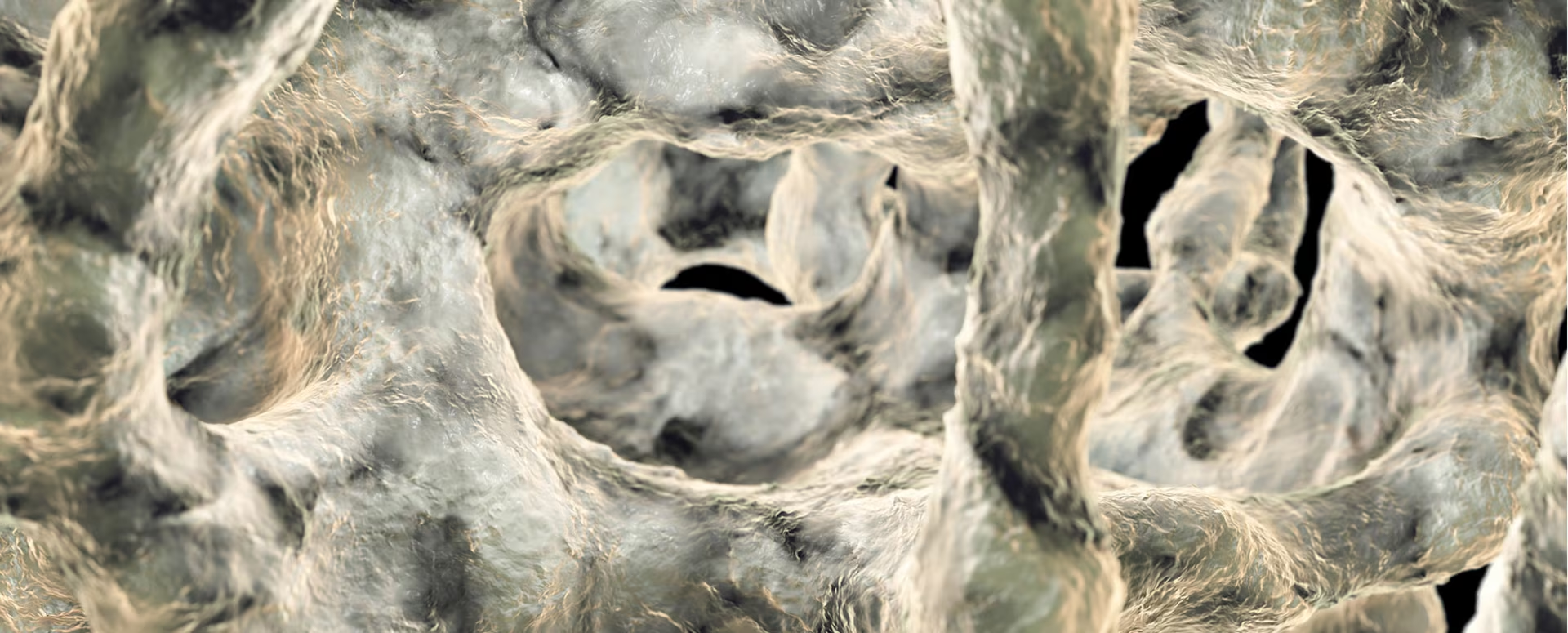The advent of highly active anti-retroviral therapy (HAART) has significantly improved the survival of human immunodeficiency virus (HIV)-infected patients.1 In this context, HIV-infected patients are living longer and are facing several associated morbidities related with ageing, such as diabetes, malignancies, cardiovascular diseases and osteoporosis.
The advent of highly active anti-retroviral therapy (HAART) has significantly improved the survival of human immunodeficiency virus (HIV)-infected patients.1 In this context, HIV-infected patients are living longer and are facing several associated morbidities related with ageing, such as diabetes, malignancies, cardiovascular diseases and osteoporosis. It is noteworthy that some of these comorbidities are pathophysiologically associated with HIV infection and its treatment and they may greatly affect the quality of life and survival of the affected patients.2 Since early in the era of effective HAART, a higher prevalence of low bone mineral density (BMD) has been described among HIV-infected patients and over recent years there has also been evidence that fragility fractures may occur at high frequency in this clinical context.1,3–29 However, most literature studies so far published on this topic have focused on bone metabolism and BMD,1,3–18 whereas data on fractures in HIV infection are scant and the factors influencing the fracture risk in this clinical context are still largely unknown.19–29 As a matter of fact, the awareness of HIV-related skeletal fragility is still relatively low and most HIV-infected patients are not investigated for osteoporosis and treated with anti-osteoporotic drugs in daily clinical practice.
This narrative review reports the literature data and the personal experience of the authors on skeletal fragility in HIV infection, focusing on the pathophysiological, clinical and therapeutic aspects of fragility fractures. Full text articles in the English language were selected from a PubMed search spanning 1983 to 2013, for keywords including ‘HIV’, ‘osteoporosis’, ‘fracture risk’, ‘antiretroviral therapy’, ‘endocrine disorders’, and ‘pharmacological treatment’. Reference lists in selected papers were also used to broaden the search.
Mechanisms of Skeletal Fragility in Human Immunodeficiency Virus Infection
Osteoporosis is a skeletal disorder characterised by compromised bone strength predisposing to an increased risk of fracture.30 The skeleton is an extremely dynamic tissue with a continuous remodelling process guided by bone-forming osteoblasts and bone-resorbing osteoclasts.31 The balance between bone resorption and bone formation is crucial to guarantee the skeletal homeostasis, whereas osteoporosis develops when the activity of osteoclasts is predominant in terms of bone formation. It is intuitive that osteoporosis may be caused either by a predominant increase in bone resorption, as it specifically occurs in patients with postmenopausal osteoporosis, or by a specific impairment of bone resorption, as it is generally described in patients exposed to chronic glucocorticoid excess and in those with growth hormone deficiency.31–33 Both mechanisms may occur in HIV-infected patients, with the bone turnoverfeatures being variable during the clinical history of disease in relationship with the several factors involved in the pathogenesis of skeletal fragility with variable effects on bone remodelling.
Patients with HIV infection are frequently characterised by a clustering of factors, such as heavy alcohol use, cigarette smoking, opiate use, low body mass index (BMI) and unfavourable nutritional status, which are known to predispose to fractures in the general population.14 Moreover, HIV patients may have comorbidities (i.e., liver disease, growth hormone deficiency, hypogonadism, hypovitaminosis D, insulin resistance and diabetes) and exposed to chronic treatments (i.e., with glucocorticoids and anti-depressants) potentially affecting skeletal health.2,24,34–39 These epidemiological aspects make the specific role of HIV infection in determining skeletal fragility difficult to understand. The chronic inflammatory process underlying HIV infection was shown to increase osteoclastogenesis and bone resorption via the effects of cytokines, such as tumour necrosis factor alpha (TNF-a), interleukin (IL)-6 and the ligand of the receptor activator of nuclear factor kappa-light-chainenhancer of activated B cells (NF-kB) (RANKL), produced by activated T and B cells.40,41 Moreover, TNF-a was shown to also inhibit 1-a hydroxylase, with consequent predisposition to vitamin D inadequacy.42 Interestingly, HIV was also shown to directly interact with osteoblasts and mesenchymal cells, influencing osteoblast differentiation, survival and activity.43,44
In addition to the aforementioned factors, HAART has been involved in the pathogenesis of osteoporosis in patients with HIV infection.34 HAART typically combines nucleoside analogue reverse transcriptase inhibitors with either HIV protease inhibitors or nonnucleoside reverse transcriptase inhibitors. The nucleoside analogues suppress the replication of retroviruses by interfering with the reverse transcriptase enzyme activity causing premature termination of the proviral HIV DNA chain. Notwithstanding the positive effects on HIV infection, these drugs may cause severe side effects as mitochondrial toxicity, hyperlactataemia and lactic acidosis that may lead to osteopenia by a mechanism related to premature skeletal ageing and/or calcium hydroxyapatite loss attempting to buffer chronic acidosis.45 Tenofovir is commonly classified as nucleotide reverse transcriptase inhibitor, but its mitochondrial toxicity is lower compared with similar drugs. However, tenofovir has dose-dependent renal toxicity, which may lead to tubular dysfunction (i.e., impaired phosphorus balance) and blunted synthesis of 1,25OH vitamin D with consequent osteomalacia.11,46,47 Protease inhibitors impair HIV replication by preventing the viral protease enzymatic action, a pivotal step in the final stages of the viral replication cycle. These drugs stimulate osteoclast differentiation and activity with an increase of bone resorption.48 Consistently with these mechanisms, BMD paradoxically drops over the first 1–2 years of HAART, although this treatment leads to an improvement of systemic inflammation, body composition and endocrine milieu.28,49,50 The bone loss is associated with marked increases in bone turnover in the first 6 months of antiretroviral therapy, with markers of bone resorption rising earlier and higher than markers of bone formation, creating a ‘catabolic window’.51
In conclusion, the pathogenesis of osteoporosis in HIV-exposed patients is multifactorial, involving infection-related factors, HAART and traditional osteoporosis risk factors, such as smoking, alcohol use, low BMI, opiate use and hypogonadism, which are found in higher prevalence in this clinical context.
Clinical Aspects of Skeletal Fragility in Human Immunodeficiency Virus Infection
According to the World Health Organization, the definitions of osteopenia and osteoporosis are based on results from bone densitometry, in which the patient’s BMD is compared with the average for young adults, after adjusting for race and gender. A T-score less than or equal to –2.5 standard deviation (SD) at the hip or spine is defined as osteoporosis, whereas osteopenia is defined as a T-score between –1 and –2.5 SD.52 These densitometric definitions are applicable only for post-menopausal women and men age 50 and older, whereas for younger subjects the Z-score (i.e., the number of SDs from age-matched controls) of 2.0 or lower is used to define a BMD ‘below the expected range for age’.53 Indeed, osteoporosis cannot be diagnosed in men under 50 and pre-menopausal women on the basis of BMD alone.53
BMD has been widely investigated in patients with HIV infection and the results of these studies are concordant with the concept that low BMD is common in this clinical setting.1 However, the results are quite variable in terms of prevalence of osteopenia and osteoporosis, in part due to the different criteria used in the literature to define these conditions. The reported prevalence rate of osteopenia in HIV-infected cohorts has been described as ranging from 22 % to 71 % with rates of osteoporosis varying from 3 % to 33 %.1 Bone loss seems to occur very early, as identified in a study of primary HIV infection in which about one-half of newly infected patients were shown to have low bone mass by dual-energy X-ray absorptiometry (DXA) scan.3 Indeed, there are prospective studies demonstrating that the initiation of HAART is accompanied by an early increase in bone resorption leading BMD to drop approximately 2–6 % over the first 1–2 years of treatment.1 This finding has been consistent across studies and seems to be independent of the specific HAART used, although tenofovir-containing regimens usually have greater reductions in BMD when started in previously untreated patients.54 Osteopenia was shown to develop in about one-third of patients with treated HIV infection during a median period of 7 years of follow-up, with the time of progression being shorter (i.e. only 2 years) in those patients with baseline normal–low BMD values.17 Moreover, men progressed more rapidly than women,17 although women have been seen to progress from advanced osteopenia to osteoporosis as rapidly as only 1 year.55
These longitudinal studies provided evidence that baseline BMD values may guide the decision on the BMD testing intervals in patients with HIV infection, as well as it was proposed for the general population.55 These densitometric data are consistent with the concept that HIV infection may be associated with skeletal fragility, although the value of BMD in predicting the fractures in this clinical setting is still uncertain. Indeed, in HIV-infected patients fractures may occur even in presence of low–normal BMD values, such as in other forms of secondary osteoporosis.32,33,56,57
Data from the HIV Outpatient Study (HOPS) showed a slight annual increase in fracture rates among the HIV patients reflecting an improvement of patient survival, as well as a possible increase of awareness for bone health concerns.22 Güerri-Fernandez et al. reported a fivefold increase in risk of incident hip fractures in HIV-infected patients compared with the HIV-uninfected subjects, independent of age, gender and comorbidities.21 Similar results, albeit of a lesser magnitude, were observed for non-hip fractures (hazard ratio [HR] 1.63, 95 % confidence interval [CI] 1.12–2.32) or all clinical fractures (HR 1.75, 95 % CI 1.24–2.48).21 All these data support the concept that HIV-infected persons have a higher than expected risk of fracture at sites generally associated with osteoporosis. Several factors have been reported to be associated with fractures in HIV infection, such as older age, substance abuse, heavy alcohol consumption, low BMI, hepatitis C virus (HCV) co-infection, diabetes, prevalent fractures and low nadir CD4 cell count.19–22,24 However, it is particularly difficult to ascertain the effect of untreated HIV infection on fracture risk, since over the last 20 years the pool of untreated HIV-infected persons has been limited as a result of the progressive increase of HAART use in this clinical context. The association of HAART exposure and fracture risk showed contradictory results. Several studies reported high fracture rates during HAART, with greater effects occurring with protease inhibitors and tenofovir.20,24,27,29,58,59 However, other studies did not confirm these results22,25,60 and a decrease of fracture risk after starting HAART was observed in some experiences.61
Almost all fracture data in HIV-infected patients derive from populationbased studies using an historical assessment of clinical fractures. As a matter of fact, this approach, even if cost-effective for epidemiological studies, was not reliable for investigating the true prevalence and incidence of vertebral fractures in HIV population and likely underestimated skeletal fragility in this clinical setting. As vertebral fractures are often asymptomatic and largely underdiagnosed based upon clinical records, the radiological and morphometric approach has emerged as the method of choice for evaluating the true prevalence of fractures in population studies.62 Vertebral fractures are clinically important because they affect the clinical outcome of patients with osteoporosis in terms of development of new fractures and an increase in morbidity and mortality.63,64 These aspects may be of clinical relevance in frail patients, such as those with HIV infection. Torti et al., for the first time used a morphometric approach to investigate the prevalence of vertebral fractures in HIV patients.24 The analysis was performed on available chest X-rays and allowed to demonstrate the presence of vertebral fractures in about 27 % of males with HIV infection, in close relationship with overweight, older age and diabetes.24 The finding of almost one out of three HIV-infected patients bearing one or more radiological fractures is of potential clinical relevance mainly because bone damage seems to be largely more frequent than that assessed in previous studies by BMD measurement (osteoporosis prevalence estimated around 15 %).13 Therefore, such as in other forms of secondary osteoporosis,32,65–68 lateral spine X-rays may have a role in the screening algorithms of osteoporosis in HIV infection even before DXA scanning. Interestingly, in the study of Torti et al., most patients with vertebral fractures did not have indication to perform DXA, according to the FRAX® algorithm.24
Therapeutic Aspects
As in the general population, HIV-infected patients can be advised to modify lifestyle, stop cigarette smoking and heavy alcohol consumption, as well as increasing physical exercise to control body weight. It is noteworthy that several of the risk factors for fragility fractures are shared with other common ‘lifestyle’ diseases, such as coronary heart disease, diabetes, malignancies and liver disease, which are also frequent in people with HIV.69–71 This provides an additional rationale for a planned screening programme for these risk factors among the HIV population.72
Patients with HIV infection should also be advised to increase the daily intake of calcium, which was shown to be significantly decreased in these patients in relationship with impaired BMD.73 However, hypovitaminosis D is highly prevalent in this clinical context and adequate vitamin D supplementation is required to guarantee calcium absorption and avoid or correct osteomalacia.
All the aforementioned general measures are necessary but likely not sufficient to prevent the fragility fractures in HIV-infected patients. Anti-osteoporotic drugs could be needed to counteract the negative effects of HIV infection and its treatment on skeletal remodelling. Bisphosphonates, such as alendronate and zoledronic acid, were tested in patients with HIV infection with positive effects in terms of decrease in bone turnover and improvement of BMD (see Table 1).74–81 Moreover, zoledronic acid was shown to exert extraskeletal effects on the immune system with potential favourable outcome of HIV infection during HAART.82 However, there are still some unclear aspects concerning the use of bisphosphonates in patients with HIV infection. First, the cost-effectiveness of bisphosphonates in HIV infection is unknown, since there are no data on fractures (see Table 1). Moreover, the longterm effectiveness of bisphosphonates in HIV patients is unknown and this aspect is clinically relevant considering the early occurrence of osteoporosis after HIV exposure and the long-term survival of the patients undergoing HAART. Furthermore, the long-term safety of bisphosphonates is also uncertain. As a matter of fact, osteonecrosis of the jaw may be a clinical concern in patients with deranged immune system, such as those with HIV infection.83 The presence of one or more radiological vertebral fractures may be an important element in guiding the decision to start anti-osteoporotic treatment since patients bearing vertebral fractures are at highest absolute risk of a further fracture independently of BMD values.63 Moreover, morphometric re-evaluation of the spine during bisphosphonate therapy (after 12–24 months) may allow patients who may eventually refracture under treatment to be detected. These patients may be defined as ‘resistant’ to bisphosphonates and may be candidate to anabolic treatment with teriparatide.
Another clinical challenge is the definition of the therapeutic threshold for starting anti-resorptive therapy. In the general population aged 50 or older, the therapeutic decision-making is mainly guided by the definition of the individual fracture risk by algorithms, such as FRAX, which consider several factors predisposing to skeletal fragility.84 In HIVinfected patients, the FRAX algorithm was shown to underestimate the fracture risk,24 mainly because patients with HIV infection are usually evaluated for skeletal fragility at a younger age than those already considered for the validation of FRAX. For the same reasons, BMD alone cannot be considered to assess the fracture risk in patients with HIV infection since there are no absolute densitometric criteria to define osteoporosis in men younger than 50 and in pre-menopausal women.53 As a matter of fact, DXA screening is usually recommended in HIVinfected men older than 50 years and HIV-infected post-menopausal women.85 In patients starting anti-osteoporotic treatment, BMD should be re-tested after 12–18 months to monitor the effectiveness of the therapy, whereas in patients not treated with bone-active drugs the re-testing of BMD may be guided by the baseline values taking into account the available prospective data on the changes in BMD in HIV patients and in post-menopausal women.17,55
Hypogonadism and growth hormone (GH) deficiency may occur in HIVinfected individuals35 and these conditions may contribute to bone loss in this clinical context, such as in the general population.61,86 Although there is a rationale for using testosterone and recombinant GH,33,87 there is still insufficient evidence to recommend these drugs for treatment of skeletal fragility in HIV infection.88–96
Conclusion
Bone loss occurs frequently in HIV-infected patients and the aetiology of this disorder is multifactorial involving the chronic inflammation, direct effects of HIV on bone cells, effects of HAART on bone remodelling and bone metabolism, as well as the clustering in HIV-infected patients of traditional risk factors for skeletal fragility. The relative contribution of these factors in each patient may be variable and the definition of the individual risk factor for fractures in HIV-infected subjects remains a clinical challenge.
Patients with HIV infection develop fragility fractures. Indeed, the extent of the problem is currently underestimated, but it may become clinically relevant in the near future when the HIV patients will approach to the older decades of life. The crucial point, therefore, is to identify specific diagnostic and therapeutic strategies able to protect the skeleton from the negative effects of HIV infection, since the early phases of natural history of disease. Specifically, the efforts should be devoted to early diagnosis of fractures with the spine morphometric approach and to assess the effectiveness of anti-osteoporotic drugs in the prevention of fractures in this clinical context.







